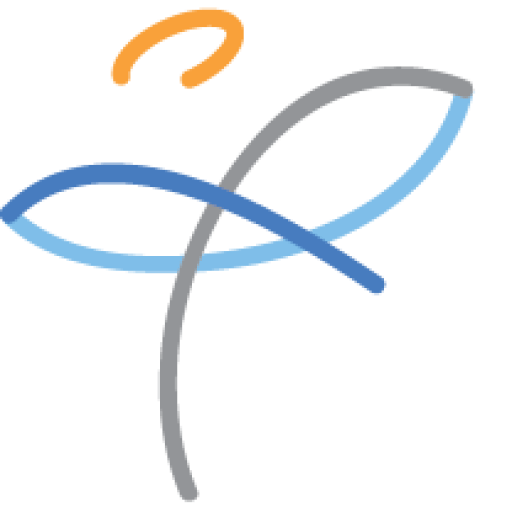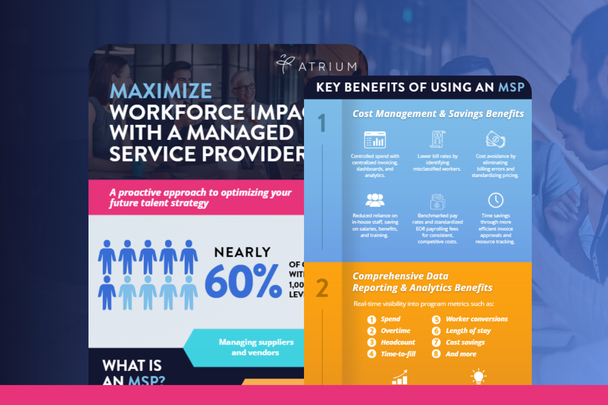Statement of Work (SOW) Services Procurement now represents 39% of all Managed Service Provider (MSP) spend, the highest percent reported to date, according to Staffing Industry Analysts’ Workforce Solutions Buyer Survey: 2025 Americas Results. SIA goes on to declare that “SOW management is not only a logical extension for MSPs to grow revenue but increasingly a strategic imperative to remain competitive in an evolving workforce solutions landscape.” Indeed, SOW is becoming a core part of extended workforce management and central to how services are sourced, governed, and integrated into total workforce strategies.
SOW vs. Staff Augmentation
SOW, the process of purchasing defined services from suppliers with clear deliverables, timelines, and costs, is concerned with outcomes, unlike staff augmentation, which centers on the number of hours worked. That distinction affects the entire services procurement lifecycle, from upstream in planning and sourcing to downstream in execution, monitoring, and payment.
While contingent workforce programs have long focused on staff augmentation, SOW expands the lens to service engagements where outcomes, not hours, drive value. Managing SOW effectively ensures organizations treat all parts of the extended workforce, including people and services, with equal discipline.
SOW Services Procurement Lifecycle
The challenge for many programs is the obstacles encountered both upstream and downstream. Upstream, misclassification at intake often turns staff augmentation into disguised as SOW. Poorly defined deliverables and inconsistent supplier vetting create confusion later. Downstream, repeated small renewals and reliance on time and materials weaken accountability. Business units often resist change due to their contract history. Additionally, supplier practices can vary significantly, resulting in inconsistent governance.
Companies that successfully design and manage their SOW lifecycle do so carefully. Upstream, they roll out SOW programs in phases, starting with high-risk categories. They tighten intake to ensure proper classification and educate stakeholders on what belongs in SOW versus staff augmentation. They also build enhanced SOWs that clearly outline deliverables, KPIs, and intellectual property terms. Downstream, they track renewal cycles rigorously, monitor supplier performance, and shift toward outcome-based payment models. Many are piloting AI to streamline both ends of the process, drafting SOWs during intake and cleansing data during closeout.
A full-cycle SOW Services Procurement program typically follows ten phases:
1. Sourcing channel selection to identify the right approach for each service need
2. Creation of the SOW with defined deliverables, scope, and terms
3. Bidding to open the process to qualified suppliers
4. Evaluation of proposals against cost, capability, and risk
5. Negotiation to finalize scope, pricing, and obligations
6. Executing the contract and formalizing governance checkpoints
7. Onboarding of the supplier into systems and workflows
8. In-life management to track deliverables, KPIs, and compliance throughout the engagement
9. Off-boarding to close out contracts, return assets, and transfer knowledge or IP
10. Data analytics to measure performance, spend, and outcomes, and feed insights back into sourcing decisions
Benefits of SOW Services Procurement
The benefits of the structured approach laid out above are tangible.
- Visibility and control provide a clear view of services spend, supplier activity, and contractual obligations.
- Compliance management ensures contracts align with legal, financial, and policy standards, reducing risk exposure and unfavorable terms.
- Cost optimization comes from stronger supplier competition, tighter scope management, and reduced leakage from misclassified work, often resulting in 15-20% savings.
- Operational excellence follows from standardized processes, consistent governance, and improved collaboration across Procurement, HR, Finance, and Legal.
Clarity from Start to Finish
SOW is a disciplined cycle for managing services spend that offers visibility, compliance, cost discipline, and operational excellence. Leaders should embed SOW Services Procurement into their total workforce strategy and treat SOW as an integrated lifecycle, from sourcing to analytics, rather than as a series of transactions.
By building upstream rigor through stronger classification, stakeholder education, and supplier evaluation, followed by strengthened downstream control through governance and consistent tracking, companies capture far greater value from their investments.











